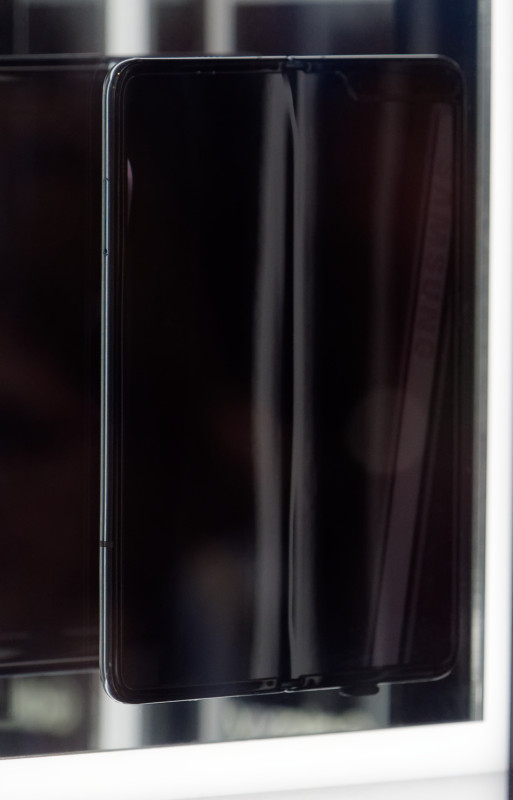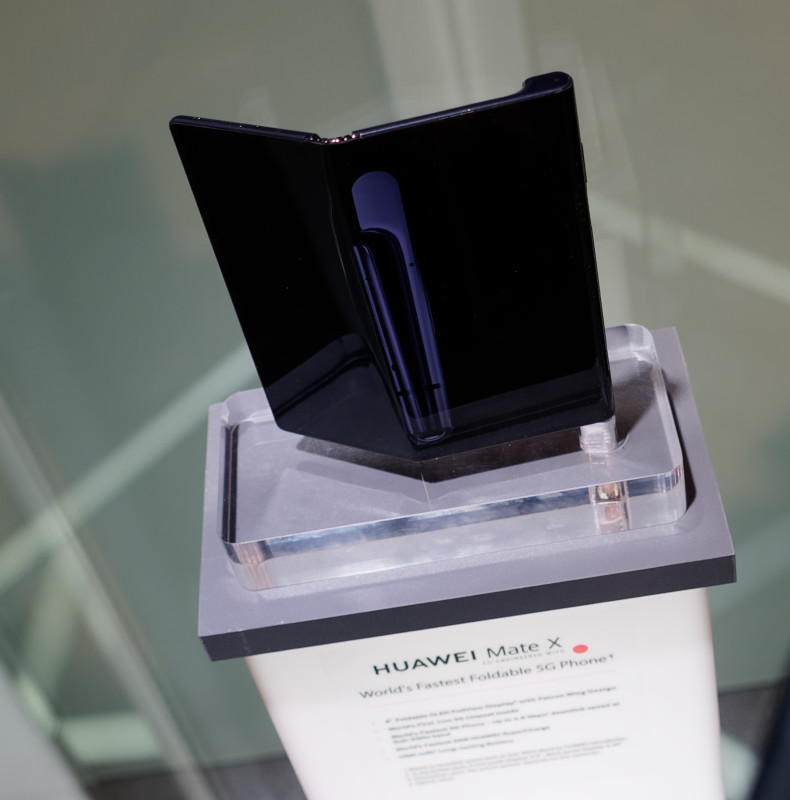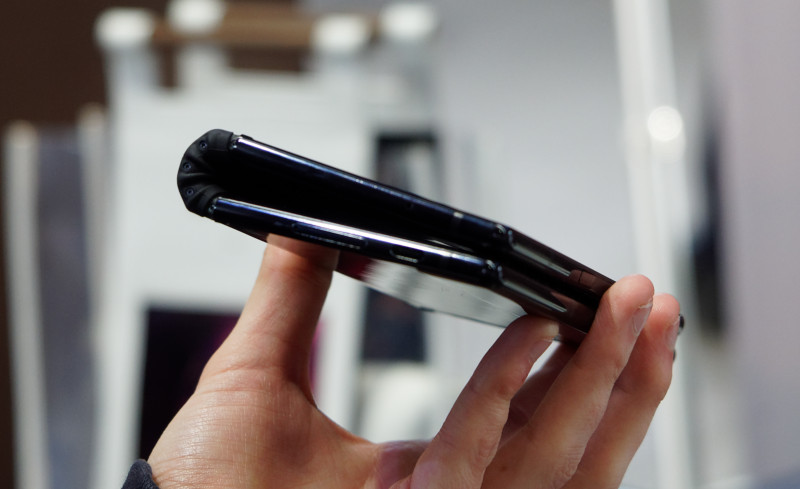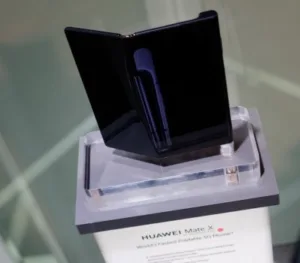My headline is from a dance game in the UK and seemed appropriate for my Display Daily which takes a look at the Samsung Galaxy Flex phone, which was shown last week at a Samsung press event in San Francisco along side ‘this year’s model’, the Galaxy S10 family and this week, behind glass, at Mobile Congress in Barcelona.

Samsung Display, along with other OLED makers, has been showing the incredible flexibility and thinness of OLEDs for a number of years and has shown privately and at trade events, smartphone prototypes that use a folding display (my favourite was a ‘trifold’ concept). Others in the past have made multi display phones, (and LG is trying with a new one at MWC) but with little success. What you really want is to be able to unfold the display to the size of a small tablet, then fold it up to put it in a pocket.or when it is just being used for simple transactions and phone calls. That’s what the new phones from Samsung and Huawei do.
An early barrier to folding displays was in supporting touch. ITO, the traditional material used for touch sensors, is extremely brittle and any bending or folding would quickly cause breakage of the sensor, but new materials were developed such as silver nanowire, to allow the touch sensor to bend and we heard of tests of 200,000 or more bends without degradation several years ago.
However, there were two remaining big barriers to consumer adoption. First, the films used to protect the sensitive OLED layers also had to be able to survive the punishment of ‘normal use’. The ‘nightmare scenario’ for flexible display makers was someone using a sharpened pencil as a touch device. If you have just spent a small fortune on a state of the art smartphone, you don’t want a hole in the display from an over-enthusiastic child. So, critical to the development has been the development of protective films that are tough enough. Of course, we won’t really know how tough they are until they are in real everyday use.
The second barrier is the limit on the smallest bending radius. This has been getting smaller and smaller, but still gives some challenges. The ideal way to protect a phone is to use a ‘fold-in’ approach, where there is a case around the outside that closes around the display when in use. That’s the design that Samsung has adopted. However, the inner radius is not as small as consumers might like and Huawei claimed in a press event this weekend that the Samsung Galaxy Fold is 17mm at one end, while Huawei’s design (which is a ‘fold out’ concept) is less than 12mm. If there is space between the displays, there is always the chance of an object falling between or getting trapped and destroying the screen. On a €2,000 smartphone, that’s an issue.
 This is the best shot we could get of the flex in its case – the surface of the OLED is not completely flat as it is opened out. Image:Meko
This is the best shot we could get of the flex in its case – the surface of the OLED is not completely flat as it is opened out. Image:Meko
With an ‘out’ fold, the OLED stays on the outside of the device at all times and wraps around the hinge, which can be much fatter. The hinge designs in either case are very complex – Huawei says that there are 100 components in its patented hinge design. Huawei also chose to wrap the display fully across one side, but only about 75% across the second side, allowing for an area that could protrude a little to contain the cameras and other components. As a result, the Huawei has no ‘camera bump’ It also avoids notches or holes in the display itself to allow the selfie camera to be used.
 This view of the Huawei MateX shows the ‘bump’ where the cameras are. Image:Meko
This view of the Huawei MateX shows the ‘bump’ where the cameras are. Image:Meko
It looks like a good solution, as the smartphone can be folded to be flat, but, of course, it means that the OLED is continuously exposed to potential damage and it was telling that in the announce, the firm also showed a custom protective case. It needs to be good as the Huawei is epected cost even more than the Samsung at around €2,200. Once again, the smartphone was only shown behind the glass at MWC.
As well as looking at the form factors, both companies have paid attention to how to operate the phones and Samsung has a nice mode where any content (such as a map) on the additional outer display is automatically shown on the larger inner display when the phone is opened. Huawei has worked on integration between its MateBook PCs and the phones – with a shake and an NFC connection making copying data and images very simple.
As well as these two giants, Royole was showing it Flexpai foldable, TCL had a demo of a foldable phone and Nubia had a wrist-watch style portable phone. (They were showing it yesterday but officially launching, with more details, today). (BR)
 Royole’s Flexpai manages to combine the dangers of a fold out version, with the ‘wedge’ of a ‘fold in’.. Image:Meko
Royole’s Flexpai manages to combine the dangers of a fold out version, with the ‘wedge’ of a ‘fold in’.. Image:Meko

